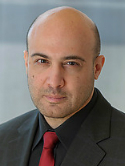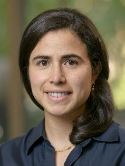Tissue-specific features of the T cell repertoire after allogeneic hematopoietic cell transplantation in human and mouse Journal Article
| Authors: | DeWolf, S.; Elhanati, Y.; Nichols, K.; Waters, N. R.; Nguyen, C. L.; Slingerland, J. B.; Rodriguez, N.; Lyudovyk, O.; Giardina, P. A.; Kousa, A. I.; Andrlová, H.; Ceglia, N.; Fei, T.; Kappagantula, R.; Li, Y.; Aleynick, N.; Baez, P.; Murali, R.; Hayashi, A.; Lee, N.; Gipson, B.; Rangesa, M.; Katsamakis, Z.; Dai, A.; Blouin, A. G.; Arcila, M.; Masilionis, I.; Chaligne, R.; Ponce, D. M.; Landau, H. J.; Politikos, I.; Tamari, R.; Hanash, A. M.; Jenq, R. R.; Giralt, S. A.; Markey, K. A.; Zhang, Y.; Perales, M. A.; Socci, N. D.; Greenbaum, B. D.; Iacobuzio-Donahue, C. A.; Hollmann, T. J.; van den Brink, M. R. M.; Peled, J. U. |
| Article Title: | Tissue-specific features of the T cell repertoire after allogeneic hematopoietic cell transplantation in human and mouse |
| Abstract: | T cells are the central drivers of many inflammatory diseases, but the repertoire of tissue-resident T cells at sites of pathology in human organs remains poorly understood. We examined the site-specificity of T cell receptor (TCR) repertoires across tissues (5 to 18 tissues per patient) in prospectively collected autopsies of patients with and without graft-versus-host disease (GVHD), a potentially lethal tissue-targeting complication of allogeneic hematopoietic cell transplantation, and in mouse models of GVHD. Anatomic similarity between tissues was a key determinant of TCR repertoire composition within patients, independent of disease or transplant status. The T cells recovered from peripheral blood and spleens in patients and mice captured a limited portion of the TCR repertoire detected in tissues. Whereas few T cell clones were shared across patients, motif-based clustering revealed shared repertoire signatures across patients in a tissue-specific fashion. T cells at disease sites had a tissue-resident phenotype and were of donor origin based on single-cell chimerism analysis. These data demonstrate the complex composition of T cell populations that persist in human tissues at the end stage of an inflammatory disorder after lymphocyte-directed therapy. These findings also underscore the importance of studying T cell in tissues rather than blood for tissue-based pathologies and suggest the tissue-specific nature of both the endogenous and posttransplant T cell landscape. |
| Keywords: | t lymphocyte; t-lymphocytes; mouse; animal; animals; mice; hematopoietic stem cell transplantation; pathology; receptors, antigen, t-cell; graft versus host reaction; graft vs host disease; lymphocyte antigen receptor; humans; human |
| Journal Title: | Science Translational Medicine |
| Volume: | 15 |
| Issue: | 706 |
| ISSN: | 1946-6234 |
| Publisher: | American Association for the Advancement of Science |
| Date Published: | 2023-07-26 |
| Start Page: | eabq0476 |
| Language: | English |
| DOI: | 10.1126/scitranslmed.abq0476 |
| PUBMED: | 37494469 |
| PROVIDER: | scopus |
| PMCID: | PMC10758167 |
| DOI/URL: | |
| Notes: | The MSK Cancer Center Support Grant (P30 CA008748) is acknowledged in the PubMed record and PDF. Corresponding MSK author is Jonathan U. Peled -- Source: Scopus |
Altmetric
Citation Impact
BMJ Impact Analytics
MSK Authors
-
 618
618Van Den Brink -
 1070
1070Giralt -
 896
896Lee -
 120
120Hanash -
 257
257Ponce -
 946
946Perales -
 438
438Landau -
 220
220Murali -
 267
267Socci -
 674
674Arcila -
 44
44Li -
 214
214Tamari -
 127
127Hollmann -
 158
158Peled -
 107
107Politikos -
 206
206Zhang -
 54
54Slingerland -
 9
9Baez -
 11
11Aleynick -
 21
21Blouin -
 39
39Markey -
 31
31Masilionis -
 15
15Kappagantula -
 14
14Kousa -
 25
25Ceglia -
 12
12Nichols -
 13
13Hayashi -
 19
19Elhanati -
 19
19Giardina -
 27
27Dai -
 51
51Dewolf -
 64
64Greenbaum -
 18
18Nguyen -
 12
12Andrlova -
 4
4Rangesa -
 43
43Chaligne -
 13
13Waters -
 5
5Lyudovyk -
 47
47Fei -
 14
14Gipson
Related MSK Work





